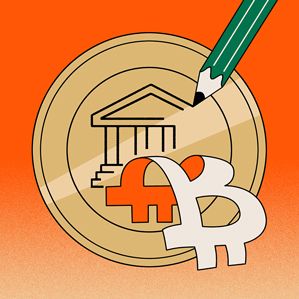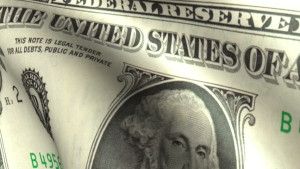“Major financial institutions like some technical features of Bitcoin but are building their own versions that leave out the digital cash and built-in economics.”

“Major financial institutions like some technical features of Bitcoin but are building their own versions that leave out the digital cash and built-in economics.”
This short post is not about Bitcoin. It’s about a new method of organizing and arbitrating communications that is at the heart of Bitcoin
We hear a lot about the blockchain. We also hear a lot of misconceptions about its purpose and benefits. Some have said that it represents a threat to banks or to governments. Nonsense! It is time to form a simple, non-political, and non-economic explanation…
What is a Blockchain?
The blockchain is a distributed approach to bookkeeping. It offers an empowering, efficient and trusted way for disparate parties to reach consensus. It is “empowering”, because conclusions built on a blockchain can be constructed in a way that is inherently fair, transparent, and resistant to manipulation.
This is why blockchain-backed systems are generating excitement. Implemented as distributed and permissionless, they take uncertainty out of accounting, voting, legislation or research, and replace it with trust and security. Benefits are bestowed without the need for central authority or arbitration. The blockchain not only solves a fundamental transaction challenge, it addresses communication and arbitration problems that have bedeviled thinkers since the ancient Egyptians.
Related:
—Philip Raymond, CRYPSA Co-chair
Cryptocurrency Standards Association

When my daughter was just starting primary school, she would look inside a book for the pictures before reading the text. She was old enough to read without pictures, but she wanted to get a quick synopsis before diving in. “Look, Dad! a bunny is carrying a giant clock into a rabbit hole.”
This is my first article without pictures. At least none of Bitcoin, because the copper coin metaphors are tired and inaccurate. At the user level, owning bitcoin is simply your stake in a widely distributed ledger. Ownership exists only as strings of secret code and public code. There is no physical coin.
Since the only pictures in this post show a white rabbit with a big clock, let me give you the quick synopsis: The answer is “No”. Bitcoin will not end government, nor its ability to tax, spend—or even enforce compliance.
But there is an irony: Most lawmakers and regulators have not yet figured this out. They perceive a great threat to their national interests. That’s why Andreas M. Antonopoulos runs around the world. He briefs prime ministers, cabinets and legislators with the noble purpose of demystifying and de-boogieing Bitcoin.
Does Bitcoin Help Tax Cheats?
I accept the need for taxpayer reporting, measurement, and compliance initiatives. After all, it’s human nature to dislike paying taxes. Many individuals dodge taxes, if the perceived risk of being caught is low. Sociologists also point out that people are willing to cheat a system, if they perceive it to be sufficiently big or impersonal—i.e that their individual contribution is meaningless.
[ASIDE]: For this reason, Akamai Technologies ends their free-soda-&-snack policy whenever an office grows beyond 30 people (I learned this during a job interview a few years ago). People who would normally respect the policy begin pocketing free sodas for their home or friends, if (a) they no longer know everyone, or (b) they perceive the extra burden is just a drop in the corporate bucket, and not a burden on their office peers.
I suspect that most early proponents of Bitcoin are partially motivated by a desire for low taxes and privacy. While I don’t feel that these individuals are bad for the cause (after all, I am one), I feel that it is unfortunate that they appear to be the overwhelming majority of users & supporters. Let’s dismiss, for the moment, the fraction of voices that want to completely end government and taxation…If you believe in any taxes at all, then government needs compliancy mechanisms, including methods that measure, verify and ultimately arbitrate or prosecute offenders. (Don’t blame me…I’m not even the messenger here. Just an observer).
My point is that in their effort to control a country’s monetary supply (and the interbank loan rate, etc) and in their effort to ensure taxpayer compliance, a great many governments view Bitcoin as a threat. In the past, I felt that my job was to evangelize the public on the benefits of cryptocurrency, and to a great extent, that’s what CRYPSA is all about. But in recent months, I have become confident that Bitcoin will become ubiquitous. It doesn’t need me to be an evangelist. The freight train is now rolling downhill. But…

But as an engineer, author, speaker and occasional consultant, I have found a new calling. Like Andreas Antonopoulos (my idol), I have found a calling in de-boogieing Bitcoin to lawmakers and regulators. I demonstrate that (a) cryptocurrency represents far more of an opportunity than a threat to a national interests, and (b) the future is coming at ya’.
So, either: Stand pat; Get out of the way; or Hop on!
I can give an audience filled with old-school conservatives compelling reasons to “hop on”. Ultimately, blockchain technology coupled with true, permissionless, p2p transactions will shake up established mechanisms and enforcement protocols. They will force new ways of thinking. But cryptocurrency will not end the reign of government—nor even end the ability to tax, enforce and spend. It will simply change the way they do these things. It will also change the way we conduct polls, vote, arbitrate disputes, perform scientific research and much more.
Bitcoin and the blockchain are not just technologies. They transform the way in which many tasks are performed. But it’s not just about efficiency. These technologies offer mechanisms to level the playing field. T hey bring fairness and representation to processes that were opaque and perhaps even relied on the excuse of opaqueness.
hey bring fairness and representation to processes that were opaque and perhaps even relied on the excuse of opaqueness.
Ultimately, Bitcoin may render certain government departments redundant. Nations will begin to question their need to directly control monetary policy. The impact at the department level is no reason to fear Bitcoin. Overall, it represents great opportunity and not a threat. In my opinion, the changes will benefit everyone.
Bitcoin is not an us-against-them instrument. It is win-win. Of course, perception counts. Misunderstanding potential and confusing it for a threat is a fundamental problem. I share CRYPSA’s passion to help make it a very short-term problem.
Philip Raymond is CEO and Co-Chair of CRYPSA,
The Cryptocurrency Standards Association.

A piece I wrote recently about blockchain & AI, and how I see the Lifeboat Foundation as a crucial component in a bright future.
Blockchain technology could lead to an AI truly reminiscent of the human brain, with less of its frailties, and more of its strengths. Just as a brain is not inherently dictated by a single neuron, neither is the technology behind bitcoin. The advantage (and opportunity) in this sense, is the advent of an amalgamation of many nodes bridged together to form an overall, singular function. This very much resembles the human brain (just as billions of neurons and synapses work in unison). If we set our sights on the grander vision of things, humans could accomplish great things if we utilize this technology to create a truly life-like Artificial Intelligence. At the same time, we need to keep in mind the dangers of such an intelligence being built upon a faultless system that has no single point of failure.
Just as any technology has upsides and corresponding downsides, this is no exception. The advantages of this technology are seemingly endless. In the relevant sense, it has the ability to create internet services without the same downfalls exploited in the TV show ‘Mr. Robot,’ where a hacker group named “fsociety” breached numerous data centers and effectively destroyed every piece of data the company held, causing worldwide ramifications across all of society. Because blockchain technology ensures no centralized data storage (by using all network users as nodes to spread information), it can essentially be rendered impossible to take down. Without a single targeted weak point, this means a service that, in the right hands, doesn’t go offline from heavy loads, which speeds up as more people use it, has inherent privacy/security safeguards, and unique features that couldn’t be achieved with conventional technology. In the wrong hands, however, this could be outright devastation. Going forward, we must tread lightly and not forget to keep tabs on this technology, as it could run rampant and destroy society as we know it.
Throughout the ages, society has always experienced mass change; the difference here being the ability for it to wipe us out. Therefore, it arises from a survival imperative that we strive for the former rather than the latter. We can evolve without destroying ourselves, but it won’t be a cakewalk. With our modern-day luxuries, we, as a species think ourselves invincible, while, in reality, we’re just dressed-up monkeys operating shiny doomsday technology. Just as it was a challenge to cross the seas, to invent tools and harness electricity, the grandest stakes posed by the future (and the ones defining our survival) are the most difficult to accomplish.

For most of us, figuring out the value of something that we want, comes from research. If you want a new set of wine glasses, you check the price online. Perhaps you consult a catalog. If the set of 8 stemware goblets that you like are a current model from a major company, there are probably many places to buy them. If there are multiple Ebay sellers and many recently completed sales, then you can establish the value with precision.
I’ve written a lot of Bitcoin articles on this Lifeboat Blog and elsewhere, so, let’s dig a bit deeper this time. Let’s talk about from where value really comes.
Supply and Demand
In the end, an item’s value is a direct result of supply and demand. It’s no different with a currency. And let’s be clear: Despite a raging debate, Bitcoin is a currency and not just a payment instrument. How can I be certain? Try this mental exercise—
Western Union money orders and Amazon Gift cards are each trusted monetary instruments. They facilitate cash transactions. But are they currencies with inherent value? If so, there would be no need to denominate them in units of fiat currency.
A money order is only worth something before it is redeemed. The gift card is only worth $500 when it is purchased or received as a gift. As the $500 is depleted, it becomes worthless. Eventually, it is just a piece of plastic. But like a dollar bill, a bitcoin can be circulated over and over. You may believe that its value comes from the government, but more realistically, its value arises from brand recognition and from pure supply and demand—not from a trusted redemption authority.
Bitcoin isn’t the first ethereal stash of bits with value. But it is more durable than others. The latest Pixar film on DVD or On Demand from your cable service provider has value. But piracy reduces the value dramatically. The supply is no longer scarce (no matter the demand) because of the ease and willingness to replicate digital files in any quantity. A Picasso painting is very rare, but it is so scarce, that we cannot gather enough data points to establish a stable value. Even worse, it’s not portable, divisible or fungible and it is nearly impossible to validate in the hands of the average person.
But, commodities like iPhones, Doritos tortilla chips—or even non-branded things, like Idaho potatoes, have a large and fluid market. These things have very measurable value and we can track the change in value over time.
People like to think that money is different than other commodities. In practice, it differs only by its handling characteristics: Compared to a  Picaso painting or a new iPhone 6, currency has these properties. It is:
Picaso painting or a new iPhone 6, currency has these properties. It is:
Bitcoin has all of these characteristics. In fact, it surpasses your national currency in every way. But many people are confused about that last niggling detail… Aristotle called it “intrinsic value”. They worry that there is no gold—or at least the promise of a stable government—to establish and stand behind the value of a bitcoin unit (BTC). The concern is understandable, but it is wrong.
Recall that value arises through supply and demand and not simply because of authority or promises. The real question is “Can we trust that the supply is limited and that the demand is durable?”. That is, will my coin be recognized, coveted and honored in the future?
The Case Against Bitcoin as a Currency
Here are some frightening facts (frightening for some cryptocurrency enthusiasts and early adopters): Bitcoin is manufactured out of thin air. It lacks the underpinnings of a traditional currency. Referring to that last item on Arisotle’s list above, Bitcoin seems to fail the test of intrinsic value, because it lacks at least one of these properties:
In the absence of at least one of these things, detractors claim that Bitcoin lacks a foundation—and so it is effectively worthless. But value does not come only from authority. It comes from trust and is goverend by supply and demand.

In fact, math may be a more trusted ‘authority’ than the directors of your national treasury and reserve board. Supply and demand leads to more tangible value than bankers, especially if the math leads you to believe that the demand will continue to outpace the supply. In fact, this is the primary reason that you are comfortable with a $20 bill in your pocket. You have a pretty good idea, that next week, it will still buy 2 movie tickets or 2 pizzas.
Bitcoin has achieved a “two-sided network effect” (Google the term and the economist “Marshall Van Alstyne”). It has captured the public imagination more than Picasso. It cannot be manufactured. With a reasonable understanding of wallets, it cannot be seized, stolen or lost.
The ability to mine new bitcoins is capped with a total supply of 21 million units, and so there is no opportunity for governments to inflate it through mismanagement of taxation or spending. They cannot even inflate it with good intent (for example, when they need to repair a bridge or provide for the poor). Instead, the ability to pay for these services (and all other government functions) forces them to live within a balanced budget. Spending cannot outpace the revenue generated by taxes and bonds. In a Bitcoin economy, the bonds will more likely be paid back by user fees rather than the future debt of unborn generations.* You get the point: Because governments no longer control the printing press, they cannot make hollow promises and then kick the problem into the next administration. With a limited money supply that everyone recognizes as money, governments are forced to live within their means.
What About Uniqueness?
The last item in the list above decries Bitcoin’s lack of uniqueness. You cannot mint your own bitcoins of course—but you can create an equivalent bitcoin ecosystem yourself. If your name is Bob, you can call it Bobcoin. Many countries and organizations are already doing this.
This is really no different than the US Dollar or your own national currency. The government note is difficult to counterfeit, but so is your own signature when placed on a fancy printed currency (Let’s call it a Bob-Buck). The problem is that the dollar is widely recognized, trusted and accepted, but few people other than your kids are collecting Bob Bucks.
You would face the challenge of spurring adoption. Whether it’s Bob Bucks (paper) or Bobcoin (cryptocurrency), how will you get the world to covet, mine and trade your new currency? That’s the point of a two-sided network. It becomes increasingly more difficult after one method rises to the top—especially if that method is open, transparent and extensible. Bitcoin is open. It is subject to worldwide scrutiny. But this works both ways. Bitcoin can also add incremental improvements that are part of any pretender to the throne.
Bitcoin is not just a transient coin-du-jour. It evolves and so it will not die.
How Can the Value be Measured?
I get this question a lot, and so I am adding the answer here. There is no need to measure the value of Bitcoin or define debt. Its value floats with supply and demand like a true world currency. Because the supply growth is capped and well understood, it is resistant to manipulation. As time goes by, it becomes far less likely to exhibit wild swings in value.
A few years from now, if Bitcoin spikes or tanks by 10% in a short time, you will be more likely to wonder “What is affecting the dollar?” (or Euro), rather than “What is affecting Bitcoin”. Consumers will budget for the cost of a new car or refrigerator in BTC rather than dollars or Euros. You will even see catalogs that print prices in BTC and honor them for the life of the catalog or online sale. After all, in an international market, it makes sense to quote a price in units with no geopolitical boundaries, just as we quote time in UTC (formerly called GMT).
Are these predictions crazy? They are not even bold. For us, here at Lifeboat Foundation, they are rather obvious. If we can be accused of dreaming, it is because we are ahead of the game. Look ahead, yourself. The signs are clear…
If Bitcoin has Value, What is the Value?
As Bitcoin adoption moves past enthusiasts and early adopters, the capped supply of coins (21 million, max) will be spread thinner and thinner. This doesn’t play out like a classic shortage, because unlike a supply squeeze on food or medicine, you can work with a smaller piece of the pie each year. The piece needed to pay for a car or an iPhone simply gets smaller as the unit price floats higher and higher.
Last year, I set up an equation to predict how high Bitcoin will float in 5 or 10 years. It involved a lot of WAGs (wild *ss guesses). Although I am a pundit, I am not a mathematician, and so the attempt was incomplete. No need to rehash that exercise.
 As Hysteria Withers, Bold Becomes Mundane
As Hysteria Withers, Bold Becomes Mundane
Eventually consumers, banks, brokers, and governments will recognize that Bitcoin is a far greater opportunity than it is a threat. It pulls the world together by decoupling currency controls from national agenda, inflation, manipulation and loss (You can back up your Bitcoin. Try doing that with your paper money or a defunct bank).
Philip Raymond is CEO and Co-Chair of CRYPSA,
The Cryptocurrency Standards Association.
_____________
* This is just one reason why an eventual transition to Bitcoin (as currency, and not just as a payment instrument) is in the national interest. It demonstrates to citizens that monetary policy is backed by more than growing debt, inflation or the promises of transient officials. It returns any government or economic entity to a non-inflationary, limited-supply pie. The pieces of pie can grow in value, but the pie cannot be watered down by printing more ingredients, counterfeit or even by enemy action.
Further Reading
The controversial group behind several bitcoin ‘stress tests’ has confirmed it will push ahead with its biggest experiment to date.
Speaking to CoinDesk, CoinWallet COO James Wilson said the test – which could reportedly cause a 30-day backlog of transactions – would be executed at 10am Thursday (GMT) next week.
The mysterious group, which sees its work as a drastic but necessary demonstration of Bitcoin XT’s need, has been criticised by some users for “bullying” a live network worth several billion dollars.
A brief introduction on the coming technological singularity. And a hint at how digital peer to peer cryptocurrencies like bitcoin which was the first. Will turn the ‘internet of things’ into the ‘economy of things’. Plus also I feel validates the case for a new debt free monetary system to provide a universal citizen’s dividend.
#technologicalSingularity #singularity #AI #cryptocurrency #bitcoin #citizensDividend #socialDividend #universalBasicIncome #basicIncome
Discuss this video: http://www.reddit.com/r/CGPGrey/comments/2dfh5v/humans_need_not_apply/ http://www.CGPGrey.com/ https://twitter.com/cgpgrey ## Robots, Etc…
Is Bitcoin money? To its users the answer is probably yes, but to many people the answer is less clear. Alan Greenspan, for example, said in December 2013: “I do not understand where the backing of Bitcoin is coming from. There is no fundamental issue of capabilities of repaying it in anything which is universally acceptable, which is either intrinsic value of the currency or the credit or trust of the individual who is issuing the money, whether it’s a government or an individual.” Indeed, one of the things holding back the adoption of cybercurrencies such as Bitcoin is that they do not fit well with traditional ideas about money.
Answers to the question “what is money” have typically fallen into one of three camps. The first, known as metallism or bullionism, holds that money needs to be backed by precious metal. The second camp is chartalism (from the Latin charta for a record) which holds that coins and other money objects are just tokens, that the state agrees to accept as payment of things like taxes. Finally, there is the dominant, hands-off school of thought, which most mainstream economists would agree with, which says that money has no unique or special qualities, but instead is defined by its roles, e.g. a medium of exchange.
Bullionists and chartalists therefore emphasise a different aspect of money – the inherent value or the authorising stamp – while most economists treat it as an inert chip. But none of them seem to apply well to emerging cybercurrencies, which are not backed by precious metal or the state, and (at least at first) are not much use as a medium of exchange. So how do they become money? The answer to this question is that money has quantum properties which allow it to be booted up from the ether.
Quantum money
To see why money has quantum properties, consider for example a U.S. dollar bill. On the one hand, it is a physical object which can be owned, traded, and valued. On the other hand, it represents “1”, which is why it is emblazoned (in fifteen places) with that number. And numbers and things are as different as waves and particles. Numbers live in the abstract, virtual world of mathematics, while things live in the real world – and it is the tension between its two sides which give money its powerful but often paradoxical nature. Numbers are exact, while qualities such as perceived value depend on the person and the context. Numbers can grow without limits, while natural processes tend to be bounded. Numbers are universal, while objects can be owned, or become scarce. Numbers are hard and fixed, like the particle aspect of matter. Concepts or judgments such as worth or value are fuzzy, like the wave aspect of matter.
The trade of money objects for goods or labor in a market means that those things attain a numerical value as well, namely the price, by contagion, just as the atoms in iron spontaneously align in a magnetic field. Market prices are therefore an emergent property of the system, in the sense that they emerge from the use of money objects.
Money objects are unique in that their value is designed to be objectively fixed and stable. For other goods, their values are indeterminate until the moment they are exchanged for money (just as, according to quantum mechanics, the position or momentum of a particle is fundamentally undetermined until it is measured, at which point it “chooses” a value). This special status makes money objects desirable in themselves. It is often said that money is just a medium of exchange so need have no value itself; but by attaching numbers to money objects, in a kind of alchemy, we make them valuable.
The word “quantum” has been applied to all kinds of thing outside physics and is often misused to evoke a vague sense of spooky, non-mechanistic behavior. However the use of the term, and more generally the comparison with non-Newtonian physics, is constructive here for the following reasons:
(Finally, economics is often accused of physics envy – so why not go all the way!) By attaching numbers to our idea of value, in order to quantify it, the money system binds together two very different things, and it this fusion which gives rise to its complex behavior.
Emerging markets
Implicit to traditional theories is the idea that money has to be backed by some pre-existing quantity, be it real (e.g. metal) or virtual (e.g. the law of the state). It therefore inherits its value from outside. But from a quantum perspective, rather than money being backed by something of monetary value, it is the other way round – market value comes from the use of money. This has implications for the way we interpret phenomena such as cybercurrencies, and in particular helps to explain their ability to boot themselves up from nothing more than a set of rules and an internet connection.
As mentioned above, money objects are desirable in themselves – so the more something looks like money, the more valuable its numbers become, in a self-reinforcing dynamic. And just as market prices emerge from the use of money objects, so the money system expands with its markets. A cybercurrency is supported not by metal or the state, but by something much more distributed and amorphous – its network of users. A property of networks is that their power expands rapidly with size. The value of a cybercurrency therefore grows in the same way with the size of the network of users, so can initially be near-zero. It is therefore not necessary to begin with an external debt or a source of value, because the two can expand together. Numbers which were just numbers, can suddenly become worth a great deal.
When Satoshi Nakomoto mined the first bitcoins in January 2009, he (if it is a he) had to give them away to get people interested. They had numbers, but no value. In October of that year, users set up a web site quoting a price which corresponded to the cost of electricity required to mint a coin (about 0.0008 dollars per bitcoin). Once a price was available, people began to trade, but it remained a game – until May 2010 when a software engineer managed to buy two pizzas for 10,000 BTC, by posting a request on the Bitcoin forum. Someone accepted the bitcoins and ordered the pizzas using a credit card. Bitcoin was becoming money, and it never looked back.
One reason cybercurrencies have met with resistance, from economists such as Alan Greenspan but also the general public, is because they do not conform to our traditional ideas about money and value. When the first bitcoins were mined, they had neither inherent value, nor the power of an authority. Instead the two aspects – the real and the virtual – grew together, reinforcing each other as the number of users expanded. The problem is therefore not with cybercurrencies, but with theories of money which were shaped by previous monetary eras of gold standard or state fiat currencies.
Adapted from the full paper available at SSRN.

Responding to this nugget from Engadget:
Tokyo’s district court has ruled that it’s not possible for people to own bitcoin, and therefore they cannot sue for compensation in the wake of Mt. Gox’s collapse.
The ruling comes days after the head of the world’s largest bitcoin exchange was arrested on charges of fraud. Judge Masumi Kurachi felt that bitcoins do not possess “tangible qualities” to constitute owned property. Mt. Gox held thousands of individual accounts, and so there’s plenty of angry customers looking for compensation.
Here at Lifeboat, we have a long term view of cryptocurrency, and we sense the underpinning of fundamentals that are often overlooked.
My response to the Tokyo court…
A personal stake in Bitcoin is every bit as real (and a bit more tangible) than a personal stake in Yen, Dollars or Euros. Fiat currency is backed by the knowledge that your national government will demand tax payments in kind. But is it tangible? Like any invention of humans, that’s a matter of perception.
a) Dollars / Yen / Euros
 Over the long term, national currency is likely to be debased by debt, social welfare, war, political ambition, and a desire to redistribute fruits of labor, typically to assuage political ambitions. A built in mechanism of inflation forces a hidden tax and enables legislators to spend beyond the consent of their constituents.
Over the long term, national currency is likely to be debased by debt, social welfare, war, political ambition, and a desire to redistribute fruits of labor, typically to assuage political ambitions. A built in mechanism of inflation forces a hidden tax and enables legislators to spend beyond the consent of their constituents.
b) Bitcoin
 Bitcoin on the other hand is backed by math. It is an asset without the potential for inflation or manipulation. It is a pure supply-demand currency and a pure 2-sided network—completely unfettered by the chaff that comes with central banks and national treasuries.
Bitcoin on the other hand is backed by math. It is an asset without the potential for inflation or manipulation. It is a pure supply-demand currency and a pure 2-sided network—completely unfettered by the chaff that comes with central banks and national treasuries.
A stake in Bitcoin rises over the long haul, because the total quantity of currency is capped. As it is adopted for payments and commerce, a fixed pie is sliced thinner and thinner. This results in increased value per unit. Result: A deflationary economy without the baggage of sluggish economics.
Japan has made a foolish pronouncement; one that will ultimately embarrass their courts. Declaring Bitcoin ethereal is laughable when you consider that paper money is no more tangible than an unfulfilled promise. Likewise, declaring the theft or mismanagement of Bitcoin unworthy of recovery or restitution is no different than declaring the theft of art unworthy of restitution. Consider that each Mt. Gox account holder has proof of a real dollar investment position and an appreciation that is reported and tracked by exchanges all over the world.
Wake up Japan. You have so much more to offer the world than a distorted interpretation of a new technology.
Philip Raymond is Co-Chair of CRYPSA,
Cryptocurrency Standards Association

Can you picture a world without physical money? A world where we don’t have to carry bills and coins in our pockets and wallets? Generation Z can.
Continue reading “Why Generation Z will definitely embrace Bitcoin” | >